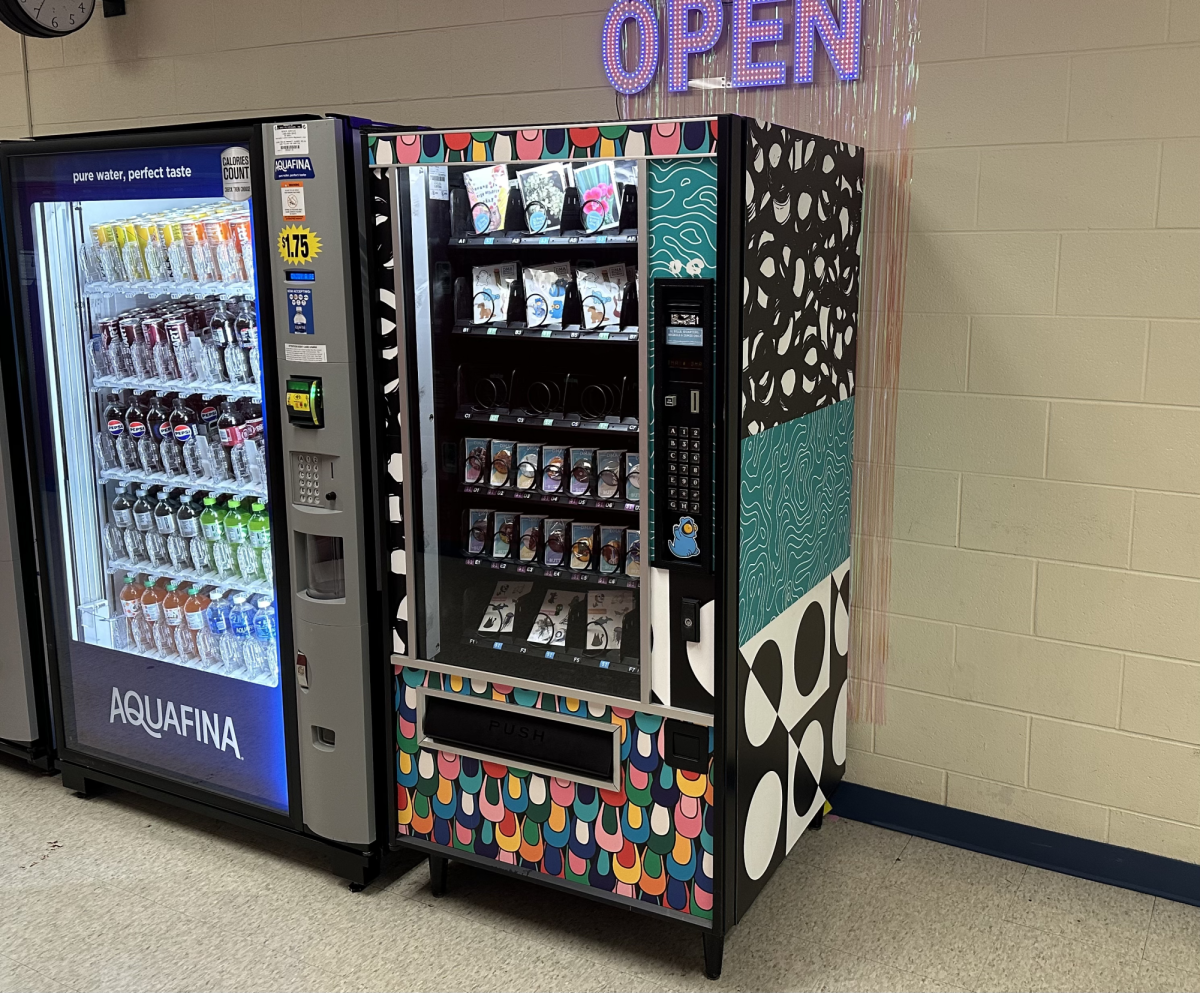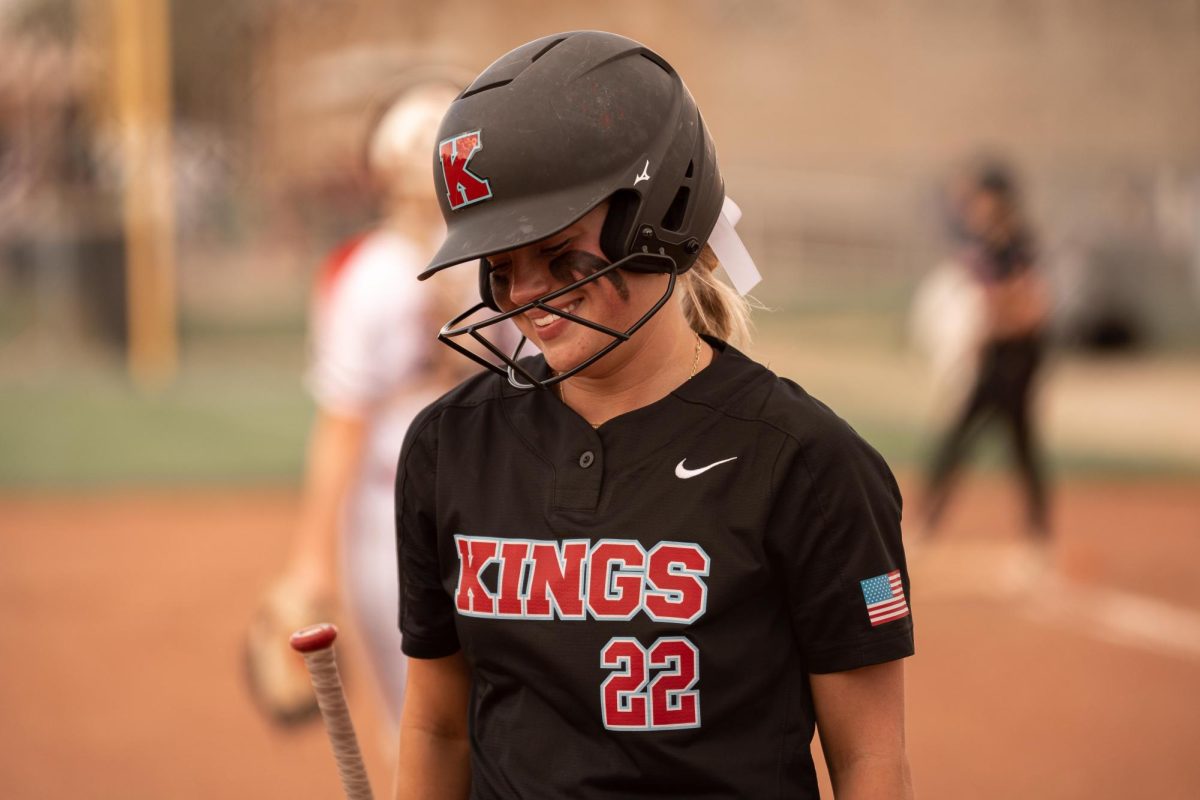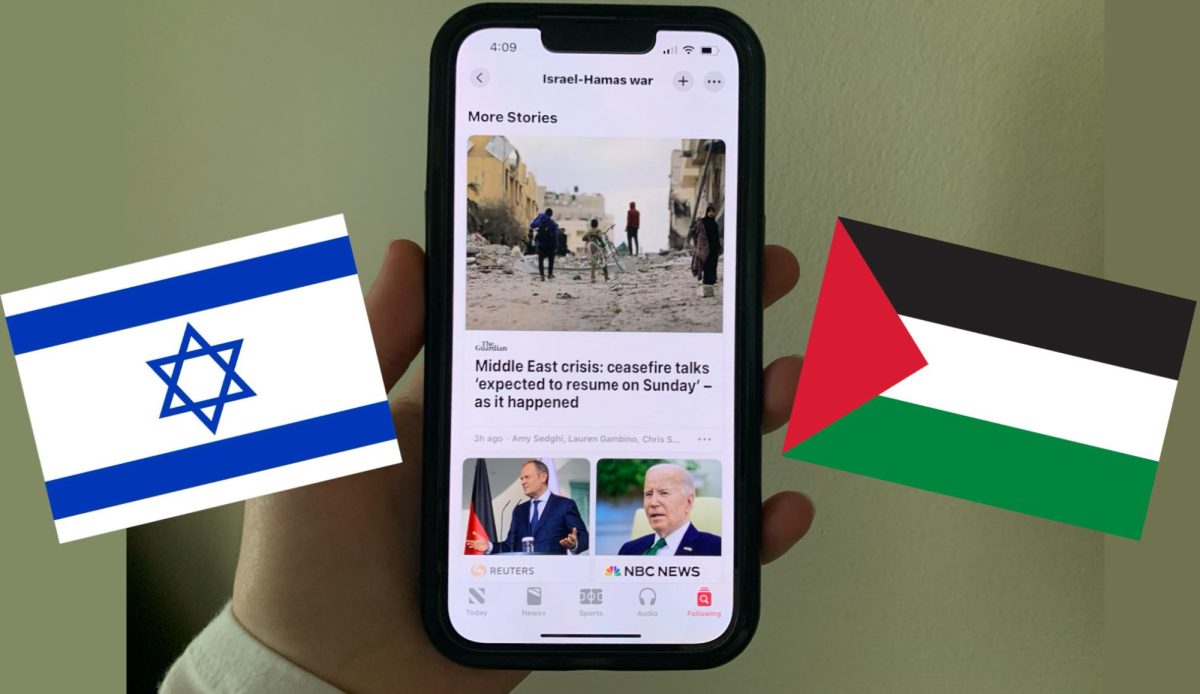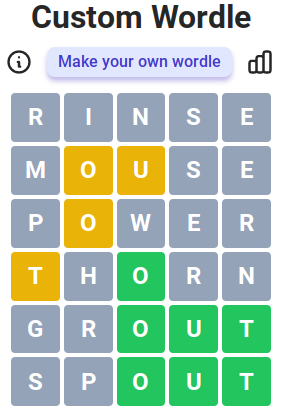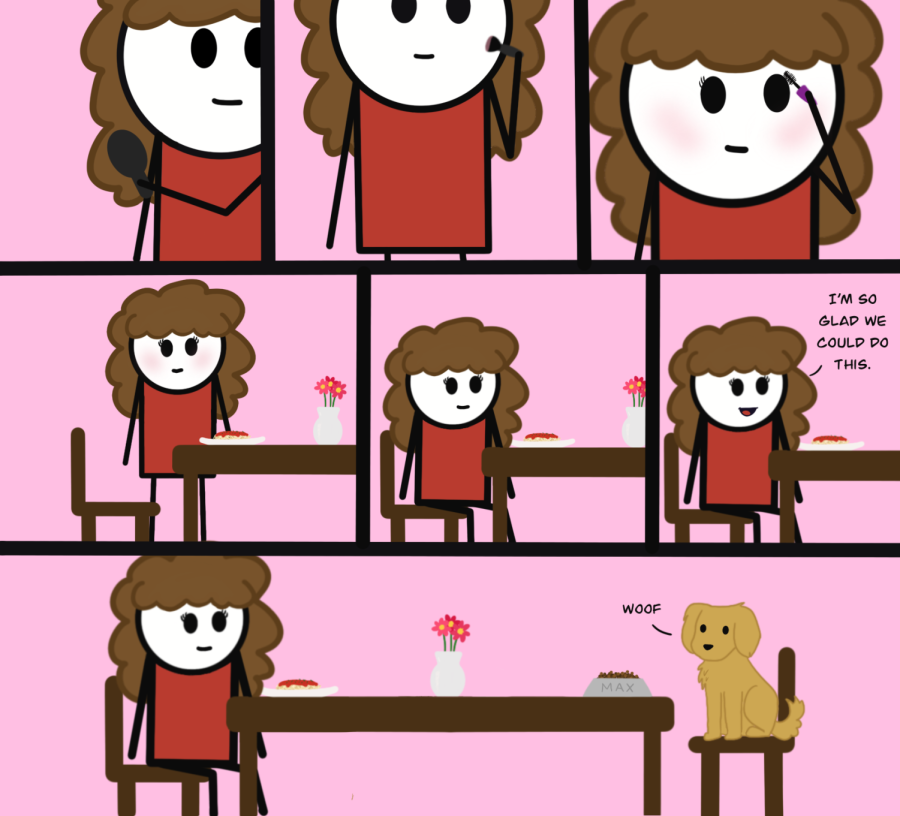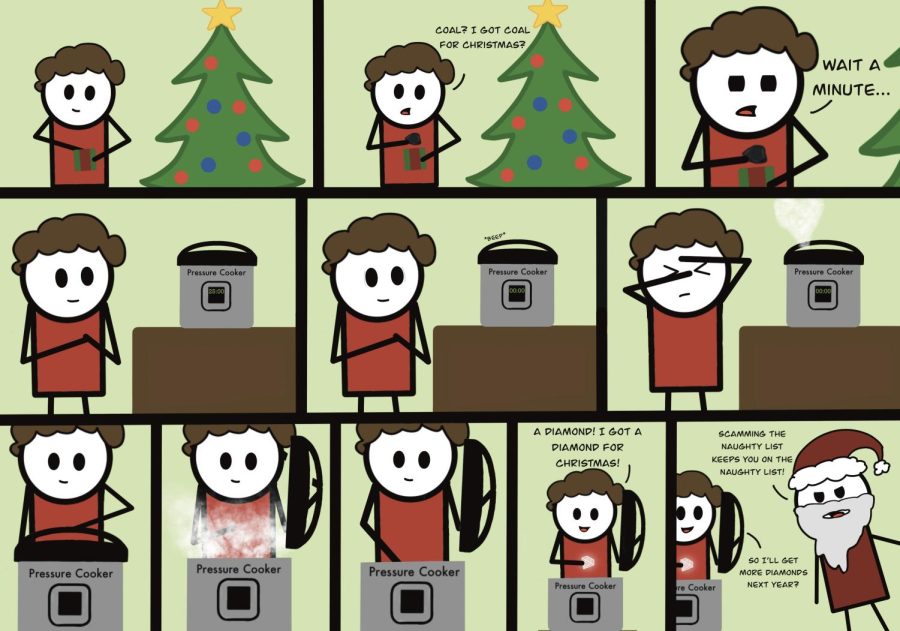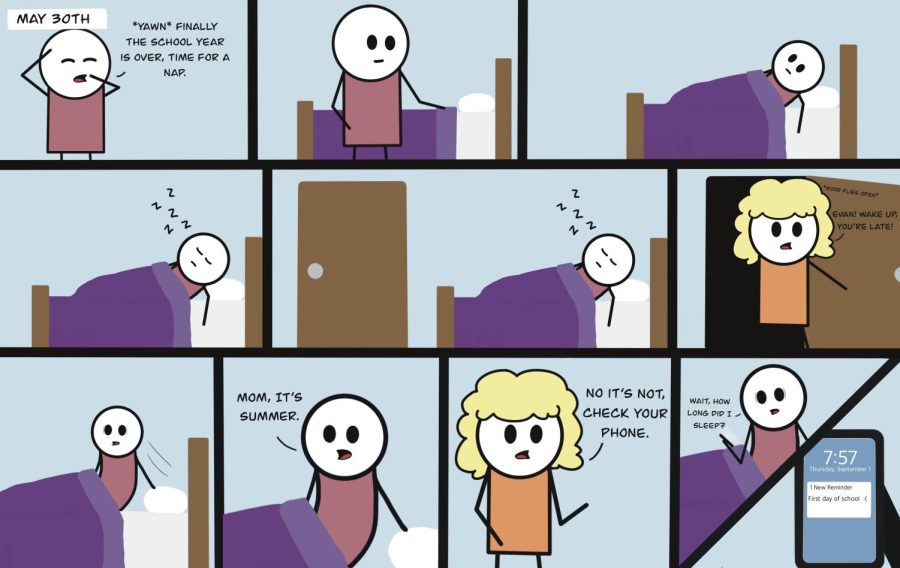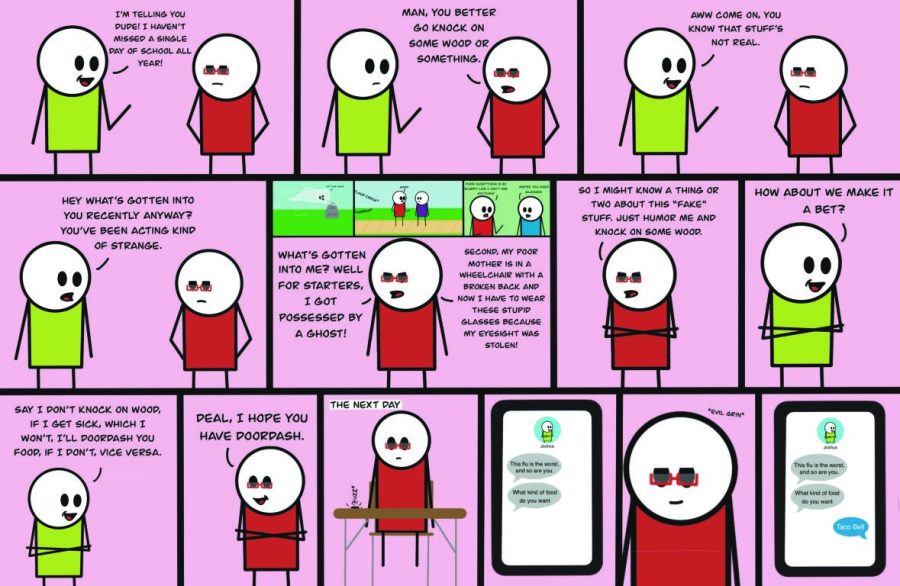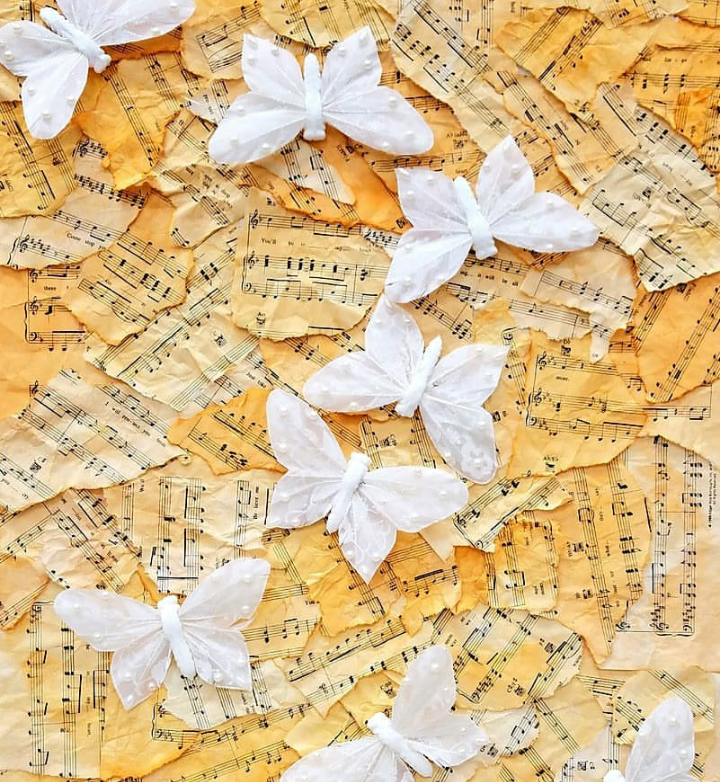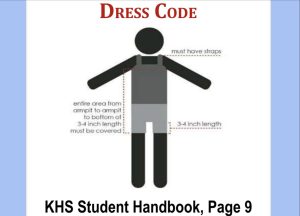Art speaks when words can’t
February 28, 2020
The folded paper wings of the hand crafted butterflies seem to flutter on the canvas, surrounded by an imaginative scene of elegant yet subtle colors and textures. To many, this art piece looks like an everyday mix media project, but a story is hidden within the layers of paint and paper. The artist, Mrs. Cooke, created this piece as well as multiple like it as gifts to families who have lost their loved ones who were students at Kings.
“When making a work of art for someone else, the artist pours their own heart and soul in the work of art,” Cooke says.
Cooke made sure to take extra time to make every piece unique and personalized in honor of every deceased student. Her touching gift is an artistic representation of Cooke’s compassion and empathy, using the art pieces to channel and express her emotions to the families.
To Cooke and many others, art helps her express difficult emotions and process pain. Using art as a healthy tool to express our inner thoughts and feelings can help us process and distance ourselves from the heavy and often intense emotions that we all feel, according to International Expressive Art Therapy Association. Feeling a connection with the families through her own experience with loss, Cooke decided to use her talent to help remind the families that they are not alone during their grief.
“I find it extremely difficult to talk on a deep level and express my feelings when it comes to the really tough topics; such as the loss of my brother. I can mention it, but I don’t let myself really think about it. I would imagine that it is difficult for others to open up because it is so much easier to keep everything bottled up inside,” Cooke says.
Cooke, as someone who is quite reserved, understands that sometimes using words isn’t always what someone grieving needs. Cooke was able to use artwork to silently form an emotional connection to give support to the lost student’s families, providing emotional comfort while leaving space for them to process their grief. Forming a connection through art is one of the many ways people use it to free themselves from strenuous emotions and express their innermost thoughts and experiences.
“Expressionism artwork needs to touch someone on a personal level. It shouldn’t just be a beautiful work of art, but be able to make others feel something too,” says Cooke.
Art can be very personal or public. Some people create art as a therapeutic form of emotional relief while keeping their art private, while others share their art with the world to provide a sense of mental and emotional understanding to others and to share their stories. Whichever the decision, it is needless to say that emotion contributes to a large portion of what it means to create art.
“I think channeling emotions in an artistic or musical manner allows people to individually understand and connect with their emotions,” says Emma Marin, a kings graduate who now practices as an music therapist. She says with the right tools and guidance, anyone can use art to express themselves.
It’s important to note that you do not have to be particularly artistic in order to express yourself artistically. Therapeutic art practices are meant to help stretch your creativity and provide a different channel for your thoughts and emotions to flow through. The process is completely individual and unique to the person doing it, and there are no set instructions on how to use art or how to make art that reflects how you feel. Different styles fit different people.
“I had a student who was really into art. She had been in patient therapy at Children’s and she was visited by an art therapist. They did a piece together that she said wasn’t great work, but it really expressed the things she was feeling,” says guidance counselor, Mrs. Murray.
Therapeutic art pieces do not have to look like something that could be hung in a museum, nor are they supposed to. If making the art piece provided any emotional relief or mental understanding, you are doing it right, says Martian. That’s what it’s meant for; its purpose is not to look pretty, it’s to make you feel better and help you heal.
“I think anyone can enjoy art as a way to destress or use art as a way to express themselves. The end goal does not have to be the final product, but it can be the enjoyment or relief felt when creating your work of art.” says Cooke.





